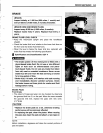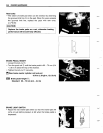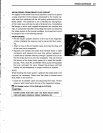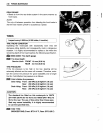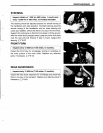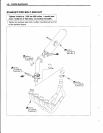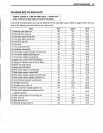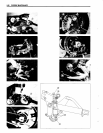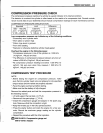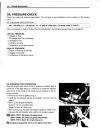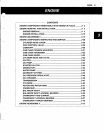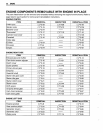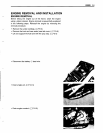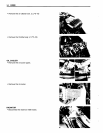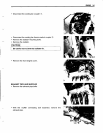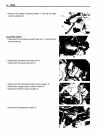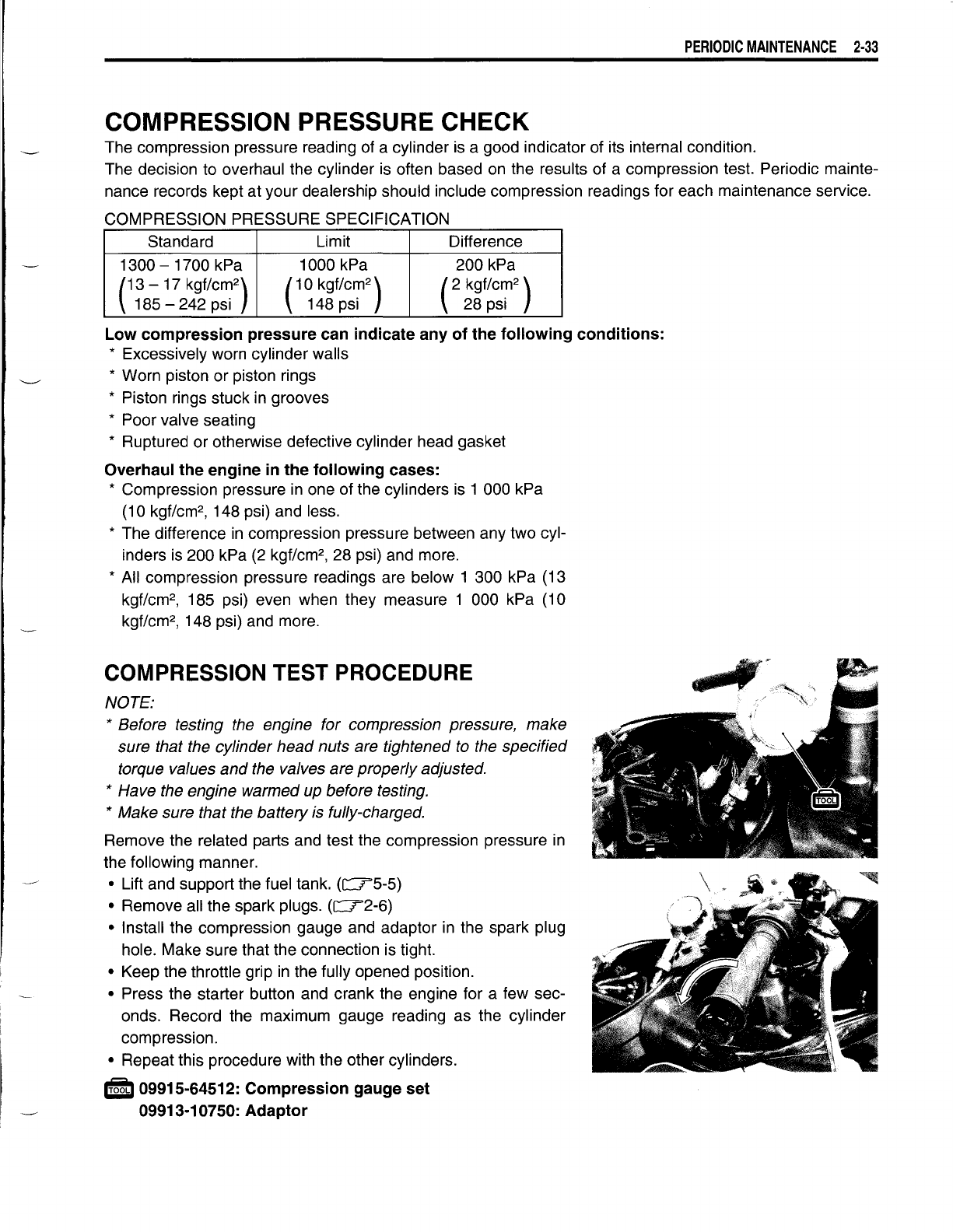
PERIODIC
MAINTENANCE
2-33
COMPRESSION PRESSURE CHECK
The compression pressure reading of a cylinder is a good indicator of its internal condition.
The decision to overhaul the cylinder is often based on the results of a compression test. Periodic mainte-
nance records kept at your dealership should include compression readings for each maintenance service.
COMPRESSION PRESSURE SPECIFICATION
Standard
Limit Difference
1300
-1700
kPa
1000 kPa 200 kPa
C3 - 17 k
gf/Cm
2
)
( 10 k
gf/Cm
2
)
(2
k
gf/Cm
2
)
185 - 242 psi 148 psi 28 psi
Low compression pressure can indicate any of the following conditions:
* Excessively worn cylinder walls
* Worn piston or piston rings
* Piston rings stuck in grooves
* Poor valve seating
* Ruptured or otherwise defective cylinder head gasket
Overhaul the engine in the following cases:
* Compression pressure in one of the cylinders is 1 000 kPa
(10 kgf/cm
2
,
148 psi) and less.
* The difference in compression pressure between any two cyl-
inders is 200 kPa (2
kgf/cm
2
,
28 psi) and more.
* All compression pressure readings are below 1 300 kPa (13
kgf/cm
2
,
185 psi) even when they measure 1 000 kPa (10
kgf/cm
2
,
148 psi) and more.
COMPRESSION TEST PROCEDURE
NOTE:
* Before testing the engine for compression pressure, make
sure that the cylinder head nuts are tightened to the specified
torque values
and
the valves are properly adjusted.
* Have the engine warmed up before testing.
* Make sure that the battery is fully-charged.
Remove the related parts and test the compression pressure in
the following manner.
• Lift and support the fuel tank.
(c::::T'5-5)
• Remove all the spark plugs.
(c::::T'2-6)
• Install the compression gauge and adaptor in the spark plug
hole. Make sure that the connection is tight.
• Keep the throttle grip in the fully opened position.
• Press the starter button and crank the engine for a few sec-
onds. Record the maximum gauge reading as the cylinder
compression.
• Repeat this procedure with the other cylinders.
,roOt!
09915·64512: Compression gauge set
09913·10750: Adaptor



